Week 7 - mirrors - geometric and visual optics
1/27
There's no tags or description
Looks like no tags are added yet.
Name | Mastery | Learn | Test | Matching | Spaced |
|---|
No study sessions yet.
28 Terms
What is a prism?
two refracting surfaces inclined together at an apical angle (a)
How do you calculate the total angle of deviation?
d = d1 + d2
.d = i1 + i’2 - a
How does light travel through prisms in terms of Vergence?
deviates light
Doesn’t change Vergence
Light is always deviated towards the base of prism
Steps to calculate deviation of a prism
Find i1’ (nsini = n’sini’)
Find i2 (feta = 90 - i’1)
Find y (all angles in triangle = 180)
Find i2 (90-y)
Find i’2 (sine law)
Calculate deviation using:
d = (i1-i’1) + (i2 - i’2) (d=d1+d2)
.d = i1 + i’2 - a
How do you calculate the minimum deviation?
n = sin(a+dmin/2)/sin(a/2)
What does a porro prism do?
inverts image
Binoculars
What does a dove prism do?
inverts image
Can rotate image
When is a prism considered thin?
Apical angle is less than 10 degrees
assume that i1 = 0
Prism stands in air- na = 1
What is the unit for thin prisms?
prism dioptres
1 prism diopter = tangent of 0.01
1 prism diopter causes a displacement of 1 unit at a distance of 100 units
How can the deviation (feta) in prism dioptres be calculated?
0(prism dioptres) = 100 x tan (feta in degrees)
To get tan feta do displacement/distance
How can the deviation be calculated in degrees in a prism?
d = (n-1) x a
How can the prism power P (in prism dioptres) be calculated?
p (prism dioptres) = 100 x tan (d in degrees)
How does the eye perceive the object through a prism?
light is deviated towards the base of the prism
Eye perceives the object to shift towards the apex
What are spherical mirrors used for?
to produce changes in Vergence by reflection
What happens with concave mirrors and draw a diagram?
reflected light converges
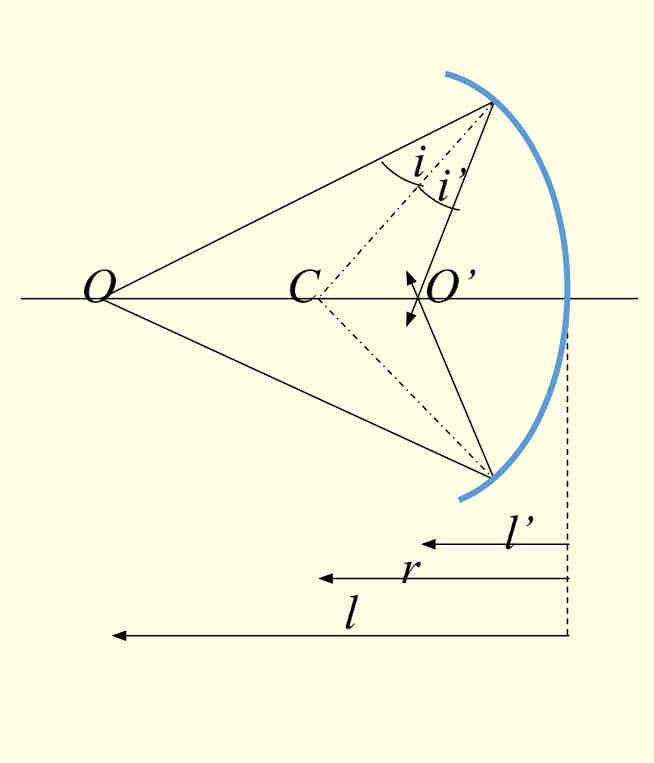
What happens with convex mirrors?
reflected light diverges
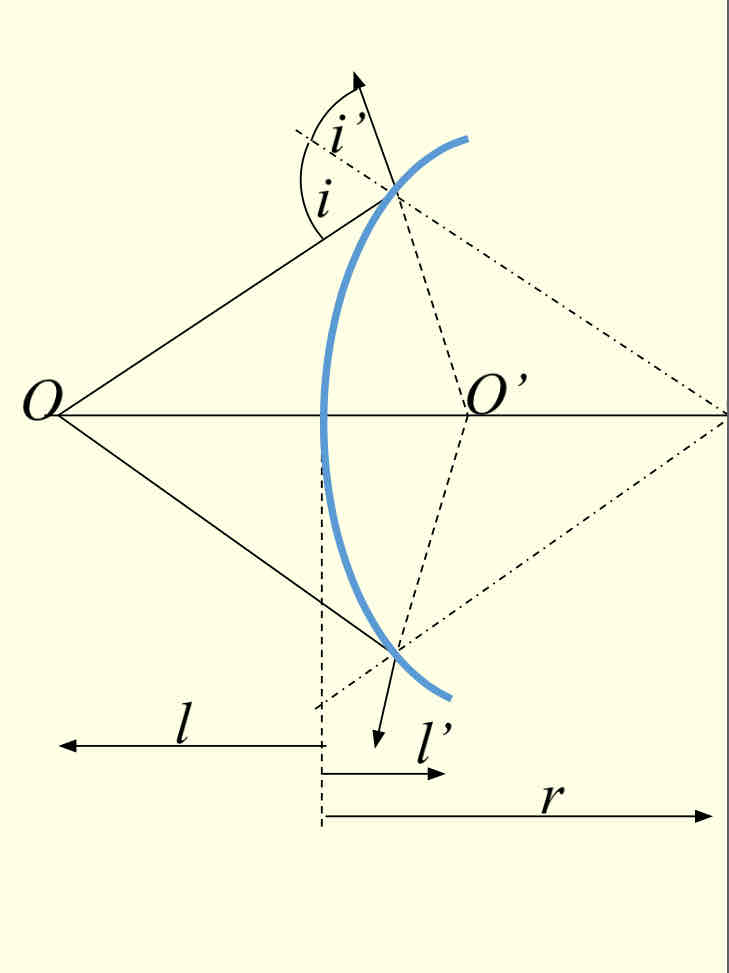
What are the mirror equations?
L’ = -n’l’
L = n/l
F = -2n/r
Draw a ray diagram for a concave mirrors

Draw a ray diagram for a convex mirror
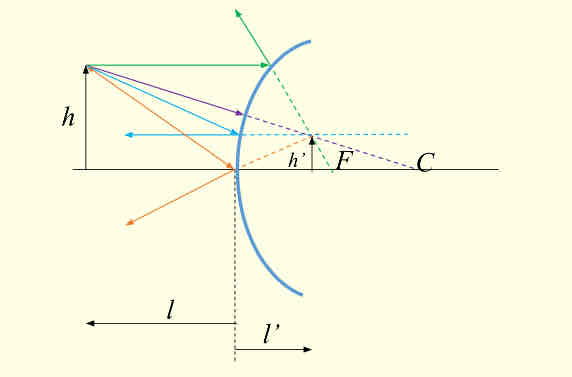
Draw a diagram of an object at infinity of a concave mirrors
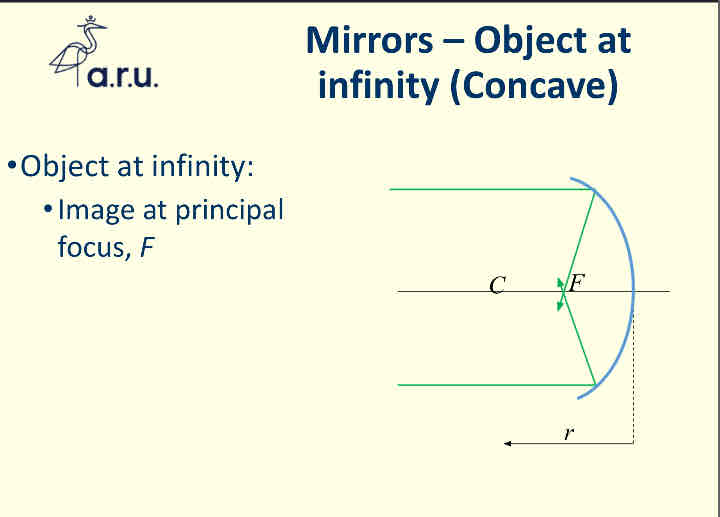
Draw a diagram of an object at infinity of a convex mirrors
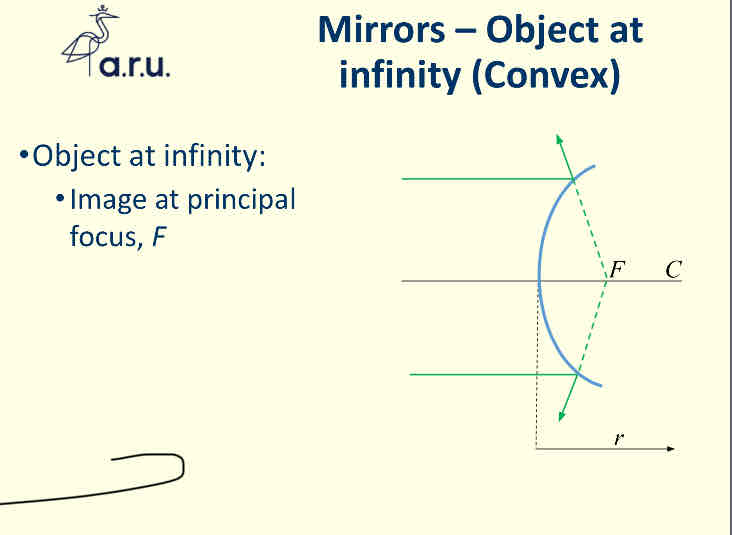
Image at infinity concave diagram

Image at infinity convex diagram

How do you calculate mirrors single principal focal point?
f = r/2
What is keratometry?
measurement of radius of curvature of cornea
Uses a keratometer
Used fr fitting rigid contacts
Applies spherical mirror theorey to cornea
How is the spherical mirrors theory applied to keratometry
cornea acts as convex mirror
Mires (illuminated object) imaged by cornea
Size of image measured
Allows for measurement of corneal radius of curvature
What do prisms fix?
misalignment in the eye